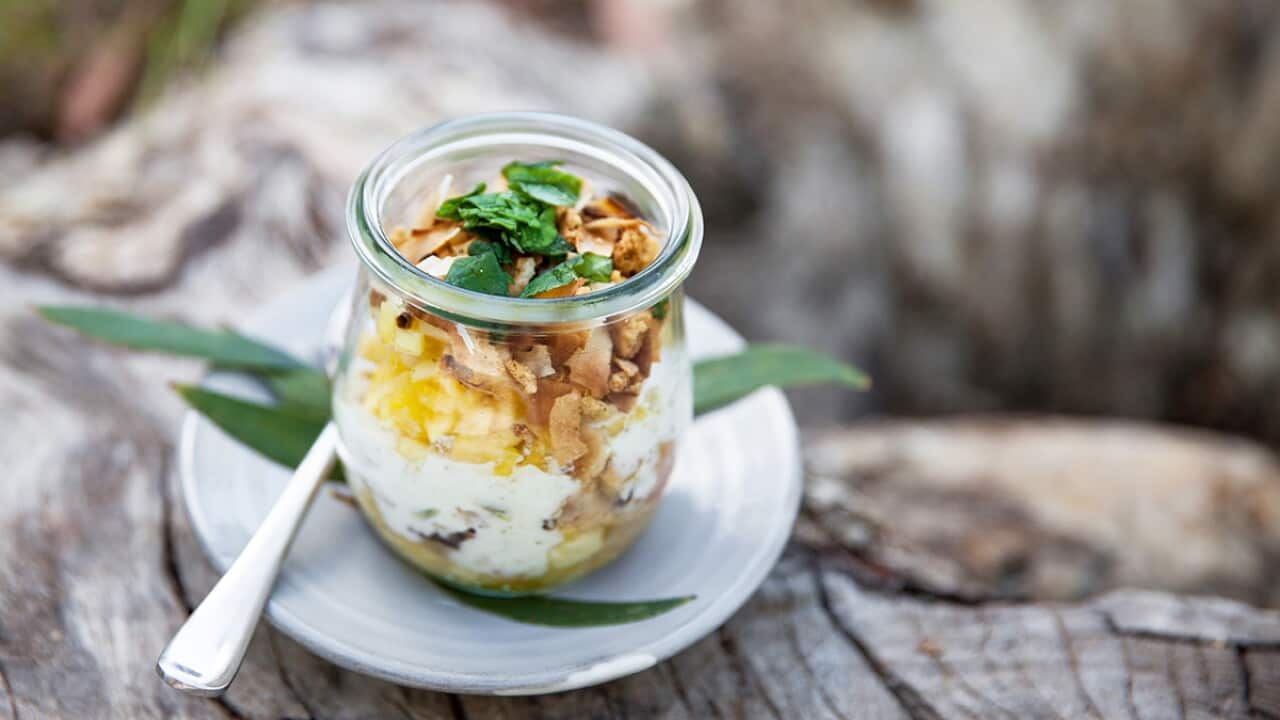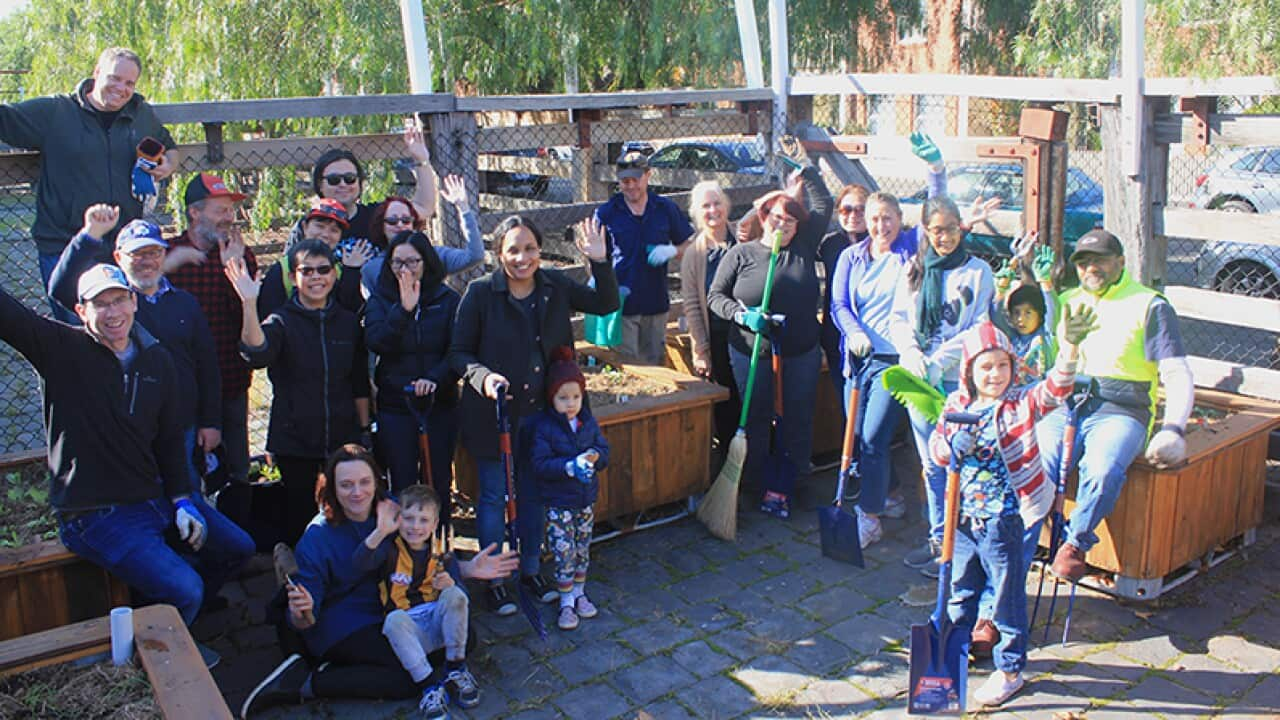Four storeys high in Sydney's South Eveleigh precinct, silvery-blue saltbush and vibrant pink-sea fig sit among a blanket of Warrigal greens and a hardy border of finger limes.
"Basically, what we have here is a mini food bowl," says Christian Hampson of the rooftop farm he and Clarence Slockee created in February as part of a collaboration with real estate group Mirvac.
The co-founders of Indigenous start-up Yerrabingin brought to life the 500-metre-square space on top of an office building in the industrial area with more than 2,000 medicinal, edible or cultural plants.
In addition to producing over 30 bushfoods, the rooftop will serve as a space for education, Indigenous employment opportunities and a range of community benefits including workshops on sustainability and wellbeing.
SUSTAINABLE FOOD

This urban pop-up farm is powered by coffee grounds
The pair had originally been asked to create a cultural landscape garden for the precinct when Mirvac proposed a rooftop farm. "No one has used a permaculture approach using all native plants, or built a native farm on a rooftop for that matter," says Hampson.
"It sounded like a great opportunity and Mirvac really understood the importance of the project's community outcomes."
No one has used a permaculture approach using all native plants, or built a native farm on a rooftop for that matter.
Given the location, Yerrabingin permaculturist and project manager Matt McKay says plants were selected for their ability to withstand the elements. A mix of hardy coastal and desert species includes thyme honey-myrtle, river mint and rosella.
"We intentionally chose shrubs rather than taller varieties because of the strong winds we get up here," says Hampson. Weight limitations were another important consideration when designing the garden, which called for free-draining soil and plants that require minimal irrigation.
A 'grow local and eat local' ethos is a key focus. "We've met with a lot of chefs and caterers, as well as bartenders who are looking at foraged cocktails," says Slockee. "We're trying to cut down food miles by encouraging those working in city restaurants to stop by and have a forage – we'll list on the website what's currently available and they can come and grab it."
The garden is fertilised entirely by worm juice and castings from the onsite worm farm, and Hampson says they've been very impressed with the way everything's been growing. "I'm really keen on the daisy yam," says Slockee. "They were a staple for the Aboriginal people up and down the east coast and were almost made extinct by the early settlers."
The native raspberries are a standout for Hampson, which he says are sweeter and higher in vitamins than other varieties. "That seems to be what you get with Australian natives, a stronger concentration of nutrients."
Hampson and Slockee knew that relying solely on the yield from a native farm was never going to be economically viable, so they had to come up with other sources of revenue. "It's the wraparound programs and the educational outcomes that will help to sustain it," says Slockee.
"If we were going to try and make money off the garden, we'd only plant two species," adds Hampson. "But that's not very educational or engaging and doesn't particularly look very nice as a garden."
The education component will include involvement with local schools and tourism boards in addition to workshops. "We've designed curriculum modules for Years 4-6, as well as a cultural tourism package that will include walking tours, cooking and foraging," says Hampson.
We've designed curriculum modules for Years 4-6, as well as a cultural tourism package that will include walking tours, cooking and foraging.
Workshops on bushfoods, native permaculture, pickling and preserving, weaving and art are hosted at the rooftop, which can be hired out for functions and will be used as an Indigenous cultural space for music and dance performances.
Plans for a teppanyaki fireplace made from termite mound clay, and an Indigenous rain garden designed to reintroduce natural processes into an urban landscape, are in the pipeline.
"We treat this like our own little science experiment, it's very much a prototype of what can be done in this type of space," says Hampson.
"The prospect of creating or inspiring similar developments is really exciting."
Stay up to date with all the news, events and celebrations of NAIDOC week across Australia on our . Be sure to follow NITV's and . Join the conversation
National NAIDOC Week runs 7 - 14 July 2019. For information head to the official . Join the conversation #NAIDOC2019 & #VoiceTreatyTruth
MAKING SUSTAINABLE CHOICES

High-protein wattleseed is nuttily delicious and good for you too













